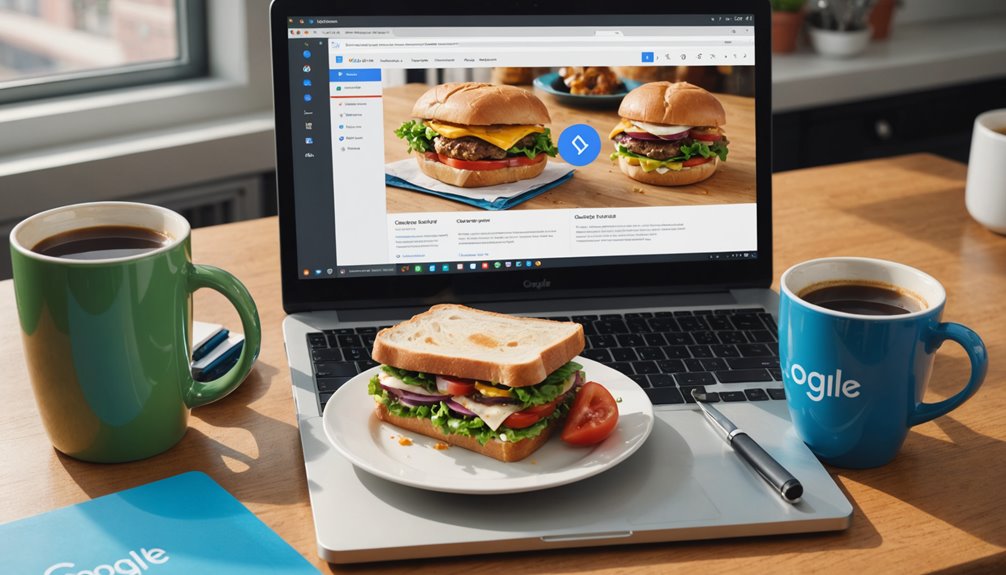Running Google and Meta campaigns can take more time than most business owners expect. On average, people spend 8–10 hours each week adjusting bids, writing ads, and checking results. This constant effort often takes your focus away from actually growing your business.
Many business owners also get frustrated because results don’t always match the time spent. Too many changes can confuse the data, make it harder to trust, and even lower results over time. Additionally, determining budgets is challenging when the reporting systems vary significantly in complexity.
The great news is that more innovative AI tools now make this process easier. These tools not only create and manage ads but also run A/B testing, improve ROI, and adjust campaigns for better results. Best of all, they give you back the time to focus on leading and growing your business instead of being stuck inside Google and Meta campaigns all day.
Key Takeaways
- Continuous optimization of Google and Meta campaigns consumes a significant amount of time, averaging 8-10 hours weekly for manual adjustments.
- Frequent changes can compromise data reliability, resulting in ineffective strategies and increased challenges in resource allocation.
- Audience saturation from constant engagement efforts reduces conversion opportunities and overall campaign effectiveness.
- Rising costs and bid competition can lead to diminishing returns, necessitating dynamic resource allocation strategies to curb wasted budgets.
- Hidden management fees and a lack of clear attribution complicate budget transparency, exacerbating the time drain in campaign management.
Understanding the Complexity of Digital Advertising
As electronic advertising continues to evolve, an analysis of the sector reveals its inherent complexity, shaped by diverse factors such as scale, technology, and economic pressures. The online environment is expected to be characterized by anticipated ad spending exceeding $700 billion by 2025, accounting for over 65% of global advertising expenditures. Audience segmentation emerges as a critical strategy, especially with mobile advertising dominating budgets and social media platforms enhancing targeting capabilities.
The integration of advanced technologies, such as AI, which is still in development, promises improvements in efficiency and campaign effectiveness. Furthermore, businesses leveraging AI-powered sales efficiency can automate repetitive tasks, allowing them to focus on strategic activities. Moreover, companies must leverage data-driven strategies to stay ahead of the competition.
However, challenges remain, including economic pressures such as budget reductions and fragmented marketing stacks, which require advertisers to adapt swiftly for impactful engagements in this multifaceted digital paradigm.
The Impact of Constant Optimization
Constant optimization in digital advertising introduces significant challenges related to time consumption and resource allocation. As campaigns require ongoing adjustments and monitoring, marketing teams often find themselves constrained by the necessary investment in analysis, which can lead to diminishing returns on performance metrics. Furthermore, the constant shifting of focus on KPIs can obscure broader business objectives and reduce general effectiveness.
This challenge is exacerbated by the importance of continuous optimization, which demands regular updates to adapt to changing market conditions and audience behaviors. Implementing AI tools can help streamline daily tasks and enhance customer connections, ultimately reducing the time burden on marketing teams.
Optimization Time Consumption
While the landscape of digital marketing benefits from rapid technological advancements, the significant time investment required for campaign optimization poses a challenge for marketers. With an average of 8-10 hours weekly spent on manual adjustments, this optimization time consumption leads to optimization fatigue among professionals. Key factors contributing to this issue include:
- Increased complexity: Digital campaigns require continuous, time-consuming attention and effort. AI solutions can help streamline these processes, reducing the burden on marketers.
- Frequent adjustments: Overly rapid changes can compromise data reliability and efficiency.
- Fragmented data: Multiple platforms complicate unified campaign analysis, consuming valuable time and resources.
- Resource drain: Excessive operational costs result from the constant monitoring and adjustments required for effective management. Additionally, marketers who utilize premium statistics gain insights that can help streamline their optimization processes.
As marketers navigate these challenges, achieving a sustainable balance becomes crucial to foster long-term success.
Resource Allocation Challenges
Given the intricacies of managing simultaneous campaigns across platforms like Google and Meta, marketers face significant resource allocation challenges that complicate effective optimization. Evaluating budget efficiency becomes complicated due to differences in reporting and attribution models, often obscuring the clarity of ROI. As costs on Meta soar, reallocating budgets requires careful coordination to avoid diminishing returns.
Furthermore, the decreasing accuracy of Meta’s audience segmentation results in broader targeting, which diminishes control over niche personas. Coupled with Google’s automated functions, which complicate the distinction between cold and warm traffic, marketers find themselves investing heavily in continuous audience management. These overlapping needs demand dynamic resource allocation strategies to guarantee effective engagement while minimizing redundant spending across channels.
As average CPCs have increased significantly, marketers must prioritize optimizing their ad spend to maintain effective ad reach. Conversational AI enhances sales interactions and provides valuable insights into audience behavior, helping marketers refine their strategies amid these challenges.
Diminishing Returns Effect
The complexities of resource allocation not only challenge marketers but also greatly influence the phenomenon of diminishing returns in digital advertising campaigns. As campaigns scale, several factors contribute to diminishing engagement and audience fatigue:
- Audience Saturation: Repeated exposure to the same users leads to reduced engagement and missed conversion opportunities.
- Rising Costs: Increased bid competition inflates costs, often resulting in diminishing returns when supplementary investments yield minimal benefits.
- Ad Fatigue: Regularly served ads result in desensitized audiences, requiring constant creative innovations to maintain effectiveness. Moreover, diminishing returns signal the need for a strategic change to avoid resource wastage.
- Dynamic Influences: Seasonal trends and competitive actions can distort performance, complicating optimization efforts and amplifying diminishing returns.
Ultimately, a thorough understanding of these elements can help marketers navigate the challenges posed by diminishing returns in their digital campaigns.
Resource Allocation: Time vs. Results
Effective resource allocation between time and results is crucial for maximizing the performance of Google and Meta ad campaigns. The budget impact greatly varies depending on a brand’s objectives and customer behavior, necessitating strategic resource management. Google Ads thrives with high-intent customers, often requiring over 70% of the budget, while Meta excels in building awareness for early-stage consumers.
Time investment is remarkably demanding; Google necessitates continuous keyword research and bid adjustments, whereas Meta focuses on creative development and audience segmentation. The need for constant refinement with both platforms can strain resources, making it essential to integrate automation tools that can streamline these processes. Ultimately, brands must balance time and budget allocations to optimize campaign efficiency, ensuring they do not overlook emerging platforms that could improve overall ROI.
Short-form video formats are projected to outperform static ads in terms of reach and cost efficiency, adding another layer to consider when allocating resources.
The Need for Cross-Platform Adaptability

As users increasingly navigate multiple platforms throughout the day, brands must adapt their advertising strategies to meet audiences at diverse digital touchpoints. Establishing cross-platform collaboration enhances brand visibility and facilitates effective audience segmentation. Key strategies include:
- Consistent Messaging: Reinforce brand recall by delivering a unified message across Google and Meta platforms.
- Creative Alignment: Tailor content to fit the distinctive formats and user expectations of each platform while maintaining harmony.
- Intelligent Retargeting: Employ data-driven approaches to engage users without causing fatigue, ensuring sustained interest.
- Integrated Tracking: Utilize conversion tracking to optimize campaign effectiveness through real-time adjustments based on performance data.
Adaptability across platforms will cultivate deeper engagement, aligning with user preferences and increasing the likelihood of conversion. Additionally, leveraging real-time data integration can enhance the effectiveness of cross-platform strategies, enabling them to meet the needs of their audience better.
Hidden Costs of Campaign Management
While brands may focus on maximizing their advertising reach, they often underestimate the hidden costs associated with campaign management, which can significantly impact total spending. Management fees typically range from 10% to 20% of monthly ad spend, introducing significant hidden costs. Moreover, agencies may apply flat, hourly, or performance-based charges, which can complicate budget transparency and accountability.
The complexity of larger campaigns requires more resources, exacerbating costs. Additionally, the initial “learning phase” of platforms like Facebook can inflate early budgets, while inefficient targeting leads to higher click costs. As brands allocate budgets across platforms, they face overlapping audience challenges, which increases the likelihood of wasted spend.
Overall, the lack of clear attribution and data integration generates additional indirect costs that can diminish the effectiveness of campaigns. Furthermore, sales automation tools can streamline campaign management and reduce time spent on repetitive tasks.
The Role of Data Analysis in Campaign Performance

Data accuracy is paramount in evaluating the effectiveness of Google and Meta campaigns, as even minor discrepancies can skew results and misinform strategy. Utilizing real-time analytics enables immediate adjustments based on current performance insights, thereby maximizing budget efficiency and campaign effectiveness. By integrating robust data analysis techniques, marketers can improve decision-making and drive more successful outcomes.
Furthermore, employing predictive analytics can further enhance understanding of campaign trends and customer behavior.
Importance of Data Accuracy
The foundation of successful marketing campaigns lies in the accuracy of data, which serves as the bedrock for effective audience targeting and strategic decision-making. Data integrity is crucial for enhancing audience segmentation, ultimately leading to improved campaign performance. Key considerations include:
- Accurate data enables the identification of target audiences, minimizing wasted impressions and budget.
- Improved data quality boosts tailored messaging, aligning offers with customer preferences.
- Reliable data bolsters campaign performance metrics, facilitating optimized strategy adjustments.
- Consistency in data enables the development of refined attribution models, providing clearer insights into consumer experiences.
Inaccurate data not only leads to wasted resources but also poses risks to financial and reputational integrity. Ensuring data accuracy cultivates trust and long-term customer loyalty, enriching comprehensive marketing efforts. Additionally, leveraging AI-powered tools can help maintain data accuracy and enhance campaign effectiveness.
Real-Time Analytics Utilization
How can real-time analytics transform marketing campaigns for improved performance? Immediate insights enable marketers to make immediate adjustments to budgets and content, fostering agility in response to market fluctuations. The integration of AI and predictive analytics is vital to this process, allowing brands to anticipate customer behaviors, such as churn and purchase intent.
By leveraging cross-channel tracking, marketers achieve a cohesive view of customer paths, facilitating data-driven decisions. Real-time dashboards provide prompt visibility into performance trends, enabling swift optimization of creatives and targeting strategies. Additionally, AI streamlines data interpretation, ensuring faster insights from vast datasets.
This dynamic adaptability not only enhances campaign effectiveness but also improves the customer experience, tailoring communications based on immediate feedback and preferences.
Preventing Burnout in Marketing Teams
While marketing teams face an escalating risk of burnout, effective strategies can alleviate this pervasive issue and foster a healthier work environment. Implementing targeted burnout prevention strategies can markedly improve team mental health.
- Establish Boundaries: Encourage clear separations between work and private time to alleviate stress.
- Promote Open Communication: Create an environment where team members feel comfortable discussing their mental health concerns.
- Invest in Well-being Resources: Provide access to mental health support and self-care initiatives to assist in recovery.
- Manage Workloads Prudently: Evaluate project demands and redistribute tasks to guarantee balanced workloads and creativity without overwhelming team members.
Strategies for Streamlining Campaign Processes

Effective campaign processes are critical for maximizing marketing performance and ensuring ideal resource allocation. Strategies to streamline these processes encompass automation techniques and workflow improvements that utilize real-time data analytics. Implementing a robust governance framework is crucial for maintaining data integrity and defining clear metrics.
| Strategy | Description | Benefits |
|---|---|---|
| Data-Driven Optimization | Utilize KPIs for measuring and analyzing campaigns | Improved decision-making |
| Automated Workflows | Automate data collection and reporting | Reduced manual efforts |
| A/B Testing | Run tests to gauge impact before full roll-out | Minimized risk |
| Integrated Dashboards | Consolidate all campaign data for unified insights | Thorough performance view |
These strategies foster collaboration and enable teams to make informed decisions, thereby improving campaign effectiveness.
Frequently Asked Questions
Why Do Google and Meta Campaigns Consume So Much Time?
Because these platforms require frequent adjustments and data analysis, they necessitate ongoing hands-on management to remain competitive. Without automation or expert oversight, the workload quickly escalates, leaving business owners overwhelmed.
How Do Google and Meta Campaigns Differ in Cost Structure?
Google and Meta campaign cost structures differ considerably; Google employs search intent-based bidding strategies with volatile CPC, while Meta focuses on interest-based targeting, offering more predictable costs, impacting general cost comparison and budget allocation efficiency.
What Tools Can Enhance Efficiency in Campaign Management?
Campaign management efficiency can be improved through the automation of campaign processes and the use of performance analytics platforms, which facilitate data-driven decision-making and collaborative efforts, ultimately fostering a unified and effective marketing environment.
Are There Best Practices for A/B Testing in Digital Ads?
A/B testing strategies reveal that campaigns optimized for just one element can improve performance by up to 20%. Employing precise audience targeting and leveraging robust optimization techniques guarantees practical knowledge, ultimately enhancing advertising effectiveness and achieving business objectives.
What Skills Are Essential for a Successful Digital Marketing Team?
A successful digital marketing team requires strong content creation and data analysis, enabling the creation of compelling content and campaign optimizations. These competencies foster collaboration, ensuring alignment with audience needs and enhancing general marketing performance.
How Can We Measure Return on Investment (ROI) Effectively?
Effective ROI measurement involves utilizing ROI metrics, thorough campaign tracking, and robust financial analysis, along with the use of data visualization tools. This integrated approach enables marketers to accurately gauge performance, facilitating informed decision-making and strategic adjustments for optimal outcomes.
Streamlining Google and Meta Campaigns with LaunchedConclusion
Running Google and Meta campaigns can feel like a second full-time job. In fact, studies show that over 60% of marketers feel overwhelmed by the constant need for updates and changes. For small and medium-sized businesses, this means less time spent on customers and growth, and more time spent on dashboards.
A significant frustration is the time wasted trying to guess which ad creative will perform best. AI tools now eliminate this guesswork by running automatic A/B testing and quickly identifying the winning ads. Another common headache is keeping track of budgets across two platforms, but AI solutions now adjust spending in real-time to avoid wasted dollars.
The great news is that you no longer need to spend 8–10 hours per week managing ads by hand. More innovative tools help you save time, lower costs, and still increase ROI. Ready to stop feeling stuck in Google and Meta campaigns? Contact GoLaunched today to learn how we can help you save both time and money while running ads.
References
- https://internationaladvertisingsolutions.com/blog/digital-advertising-statistics/
- https://www.iab.com/news/iab-state-of-data-report-2025/
- https://datareportal.com/reports/digital-2025-sub-section-global-advertising-trends
- https://www.stackadapt.com/resources/blog/future-digital-marketing
- https://www.deloitte.com/us/en/insights/industry/technology/digital-media-trends-consumption-habits-survey/2025.html
- https://www.seo.com/blog/digital-marketing-statistics/
- https://www.hubspot.com/marketing-statistics
- https://www.wordstream.com/blog/ws/2022/04/19/digital-marketing-statistics
- https://digitalmarketinginstitute.com/blog/digital-marketing-trends-2025
- https://insights.audiencex.com/10-proven-continuous-optimization-techniques-for-advertising-success/

Erik Remmel is a co-founder of Launched, a platform that helps businesses grow through AI-powered marketing, automation, and lead generation. He focuses on building scalable systems that convert cold leads into customers while streamlining operations with smart, AI-driven workflows.

